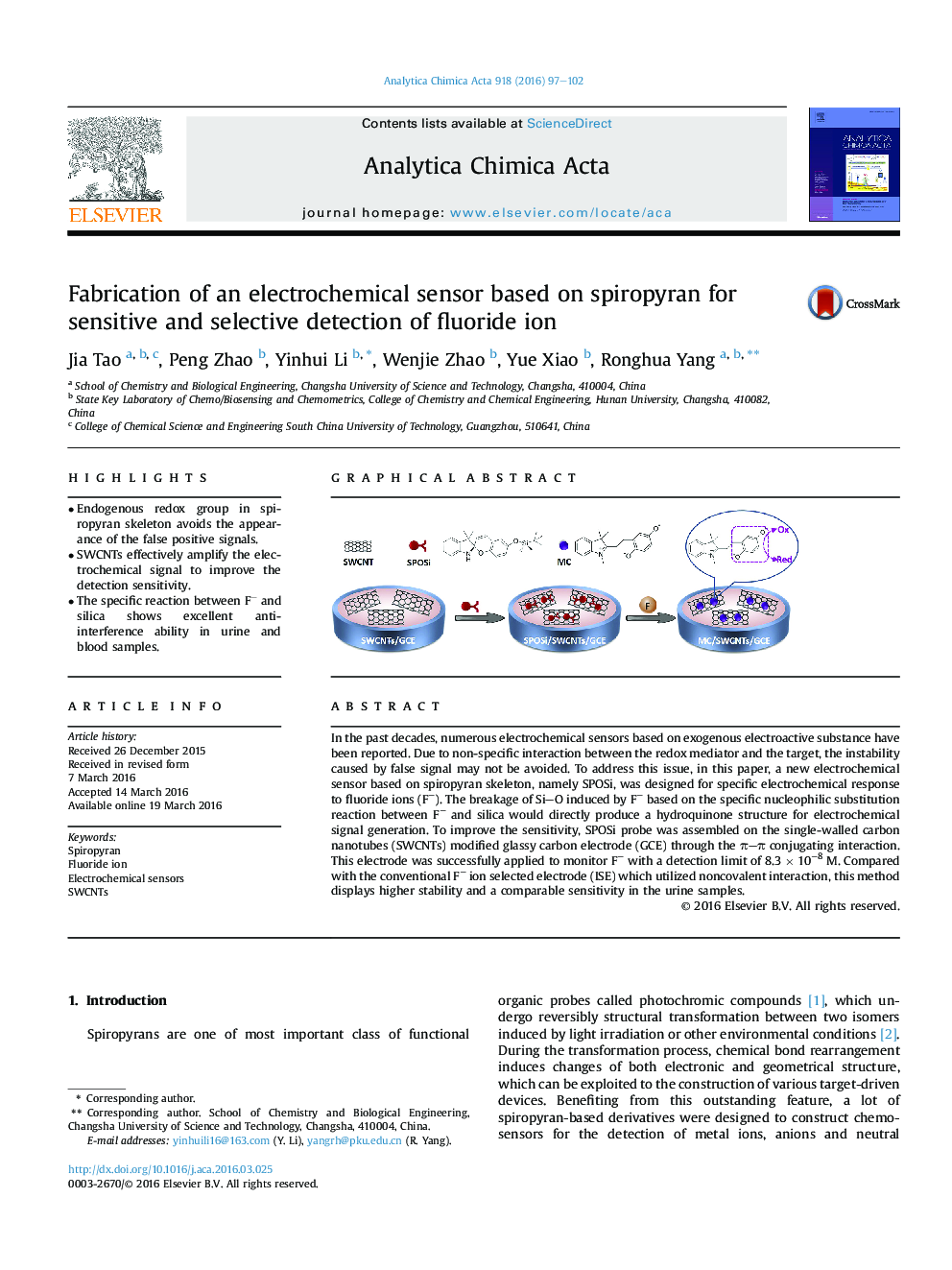| Article ID | Journal | Published Year | Pages | File Type |
|---|---|---|---|---|
| 1162990 | Analytica Chimica Acta | 2016 | 6 Pages |
•Endogenous redox group in spiropyran skeleton avoids the appearance of the false positive signals.•SWCNTs effectively amplify the electrochemical signal to improve the detection sensitivity.•The specific reaction between F− and silica shows excellent anti-interference ability in urine and blood samples.
In the past decades, numerous electrochemical sensors based on exogenous electroactive substance have been reported. Due to non-specific interaction between the redox mediator and the target, the instability caused by false signal may not be avoided. To address this issue, in this paper, a new electrochemical sensor based on spiropyran skeleton, namely SPOSi, was designed for specific electrochemical response to fluoride ions (F−). The breakage of Si–O induced by F− based on the specific nucleophilic substitution reaction between F− and silica would directly produce a hydroquinone structure for electrochemical signal generation. To improve the sensitivity, SPOSi probe was assembled on the single-walled carbon nanotubes (SWCNTs) modified glassy carbon electrode (GCE) through the π–π conjugating interaction. This electrode was successfully applied to monitor F− with a detection limit of 8.3 × 10−8 M. Compared with the conventional F− ion selected electrode (ISE) which utilized noncovalent interaction, this method displays higher stability and a comparable sensitivity in the urine samples.
Graphical abstractFigure optionsDownload full-size imageDownload as PowerPoint slide
